
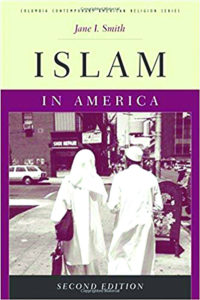
Islam in America
Jane I. Smith
Columbia University Press (2010)
This richly textured, critically acclaimed portrait of American Muslims introduces the basic tenets of the Muslim faith, surveys the history of Islam in North America, and profiles the lifestyles, religious practices, and worldviews of Muslims in the United States. The volume focuses specifically on the difficulty of living faithfully and adhering to tradition while adapting to an American way of life and addresses the role of women in Muslim culture, the raising and education of children, appropriate dress and behavior, and incidences of prejudice and unfair treatment.
The second edition of Islam in America features a new chapter on post-9/11 realities, which covers infringements on civil rights and profiling, participation in politics, transformations in Islamic law, pluralism and identity issues, foreign influences, anti-Islamic sentiment, intra-Islamic tensions, and the quest for a moderate Islam. Source notes, glossary, and additional resources also reflect recent developments and scholarship.
Jane I. Smith is senior lecturer in divinity and associate dean for faculty and academic affairs at Harvard Divinity School. She is the author of Muslims, Christians, and the Challenge of Interfaith Dialogue and Visible and Invisible: Muslim Communities in the West. She is also the coeditor of Educating the Muslims of America and coauthor of Muslim Women in America.
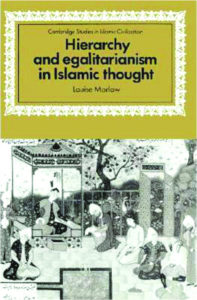
Cambridge Studies in Islamic Civilization: Hierarchy and Egalitarianism in Islamic Thought
Louise Marlow
Cambridge University Press (2002)
By examining a wide range of Arabic and Persian literature from the eighth to the thirteenth century, Louise Marlow shows the tension that existed between the traditional egalitarian ideal of early Islam, and the hierarchical impulses of the classical period. The literature demonstrates that while Islam’s initial orientation was markedly egalitarian, the social aspect of this egalitarianism was soon undermined in the aftermath of Islam’s political success, and as hierarchical social ideas from older cultures in the Middle East were incorporated into the new polity. Although the memory of its early promise never entirely receded, social egalitarianism quickly came to be associated with political subversion. This 1997 book will be of use to a wide readership of Islamic historians and of scholars assessing the impact of the modern Islamic revival.
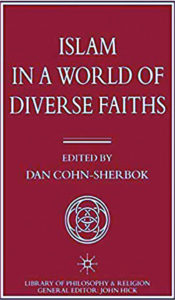
Islam in a World of Diverse Faiths
Dan Cohn-Sherbok
Palgrave Macmillan (1997)
Today the Islamic faith has exploded on the contemporary scene. On television and in newspapers Islam is depicted as playing a major role in world events. In this illuminating volume distinguished Muslim, Christian and Jewish writers explore the nature of the Islamic religion and its impact on a pluralistic society. In diverse ways they present a new and challenging vision of dialogue between the three monotheistic faiths in the modern world.
Dan Cohn-Sherbok is Professor Emeritus of Judaism at the University of Wales, Honorary Professor at Aberystwyth University, Visiting Professor at St Mary’s University and York St John University, Visiting Research Fellow at Heythrop College, University of London, and Honorary Fellow at the Centre for Religions for Peace and Reconciliation at the University of Winchester. Born in Denver, Colorado he was a student at Williams College, Massachusetts, spending a junior year in Athens, Greece. He was ordained a Reform rabbi at the Hebrew Union College-Jewish Institue of Religion. He was a Chaplain of the Colorado House of Representatives and Colonel Aide-De-Camp of New Mexico. He received a PhD from Cambridge University.
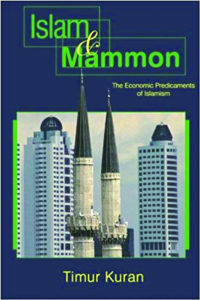
Islam and Mammon: The Economic Predicaments of Islamism
Timur Kuran
Princeton University Press (2005)
The doctrine of “Islamic economics” entered debates over the social role of Islam in the mid-twentieth century. Since then it has pursued the goal of restructuring economies according to perceived Islamic teachings. Beyond its most visible practical achievement—the establishment of Islamic banks meant to avoid interest—it has promoted Islamic norms of economic behavior and founded redistribution systems modeled after early Islamic fiscal practices.
In this bold and timely critique, Timur Kuran argues that the doctrine of Islamic economics is simplistic, incoherent, and largely irrelevant to present economic challenges. Observing that few Muslims take it seriously, he also finds that its practical applications have had no discernible effects on efficiency, growth, or poverty reduction. Why, then, has Islamic economics enjoyed any appeal at all? Kuran’s answer is that the real purpose of Islamic economics has not been economic improvement but cultivation of a distinct Islamic identity to resist cultural globalization.
The Islamic subeconomies that have sprung up across the Islamic world are commonly viewed as manifestations of Islamic economics. In reality, Kuran demonstrates, they emerged to meet the economic aspirations of socially marginalized groups. The Islamic enterprises that form these subeconomies provide advancement opportunities to the disadvantaged. By enhancing interpersonal trust, they also facilitate intragroup transactions.
These findings raise the question of whether there exist links between Islam and economic performance.
Exploring these links in relation to the long-unsettled question of why the Islamic world became underdeveloped, Kuran identifies several pertinent social mechanisms, some beneficial to economic development, others harmful.
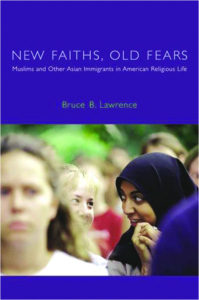
New Faiths, Old Fears: Muslims and Other Asian Immigrants in American Religious Life
Bruce B. Lawrence
Columbia University Press (2004)
As a result of immigration from Asia in the wake of the passage of the 1965 Hart-Celler Immigration Act, the fastest-growing religions in America—faster than all Christian groups combined—are Islam, Hinduism, Buddhism, and Sikhism. In this remarkable book, a leading scholar of religion asks how these new faiths have changed or have been changed by the pluralist face of American civil society. How have these new religious minorities been affected by the deep-rooted American ambivalence toward foreign traditions?
Bruce Lawrence casts a comparativist eye on the American religious scene and explores the ways in which various groups of Asian immigrants have, and sometimes have not, been integrated into the American polity. In the process, he offers several important correctives. Too often, Lawrence argues, profiles of Asian American experience focus exclusively on immigrants from East Asia, to the exclusion of South Asian and West Asian voices.New Faiths, Old Fears seeks to make all Asians equally important and to break free of traditional geographic markers, most reflecting nineteenth-century imperial values, that artificially divide the people of the “Middle East” from the rest of Asia, with whom they share certain religious and cultural ties. Iranian Americans, in particular, emerge as a vital bridge group whose experience tells us much about how Asians of many different backgrounds have found their way in their new nation.
Beyond simply expanding and refining our conception of who Asian Americans are, Lawrence draws instructive comparisons between Asian Americans’ experience and those of Native, African, and Hispanic Americans, exposing undercurrents of racial and class antagonisms. He concludes that we cannot fully comprehend the contours and valences of culture and religion in America without understanding how this racialized class prejudice shapes the views of the dominant class toward immigrants and other marginal groups.

